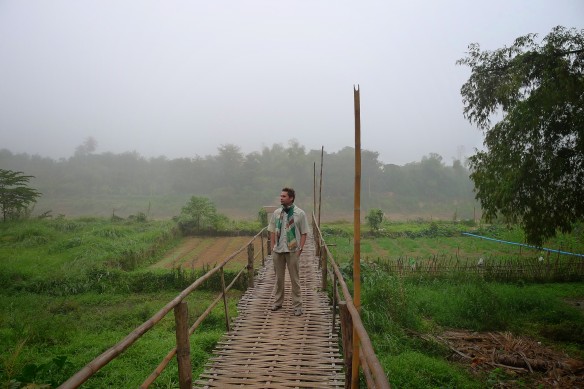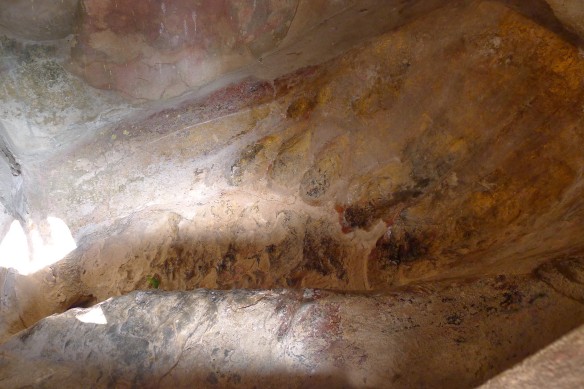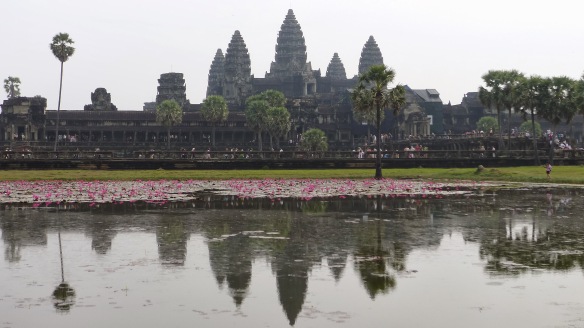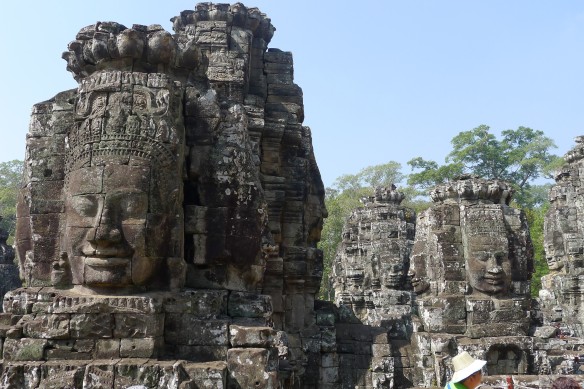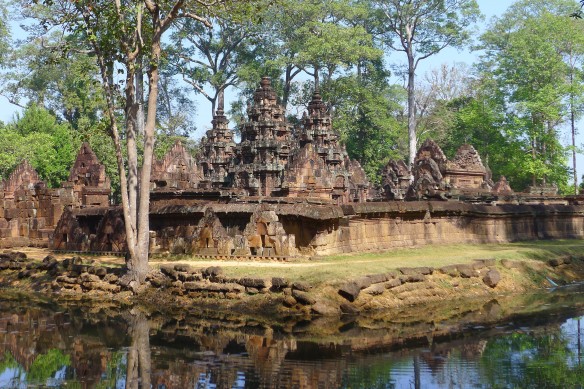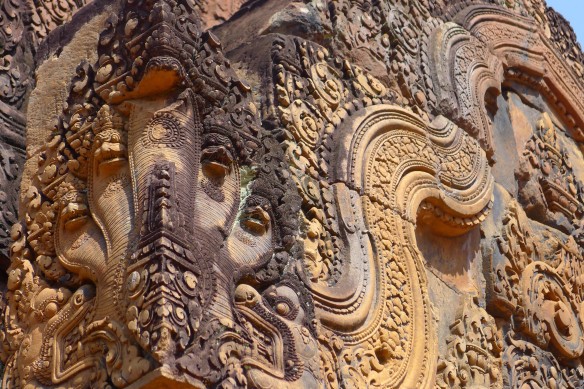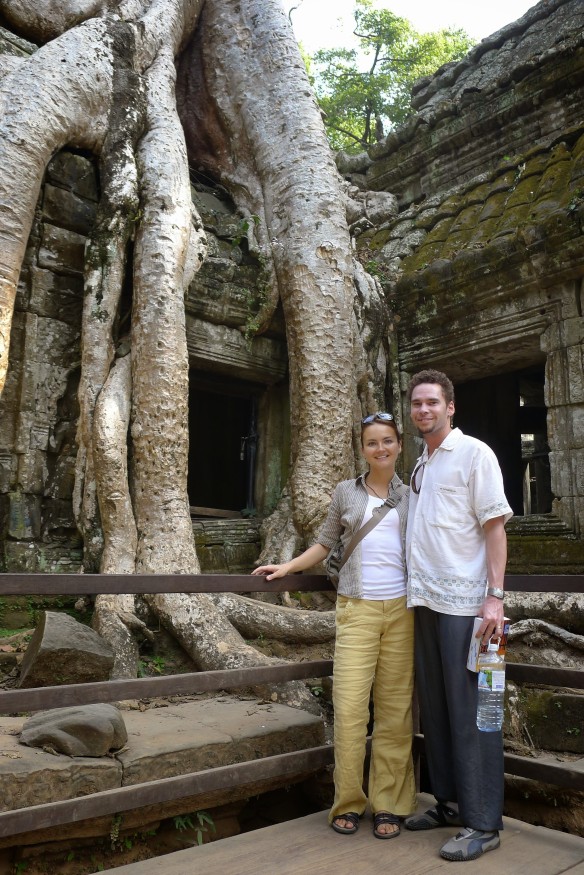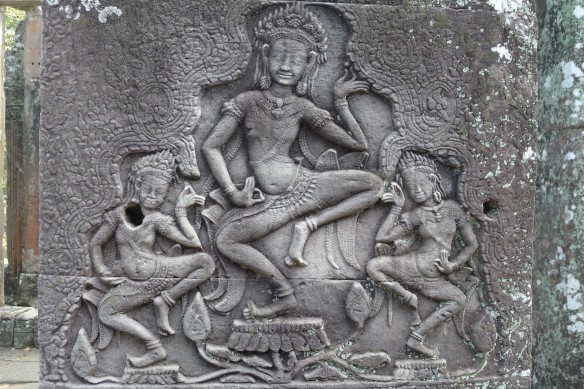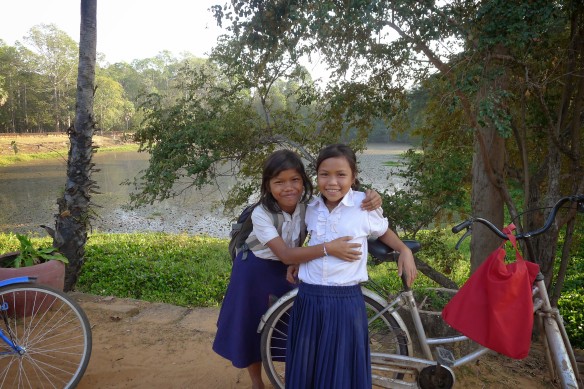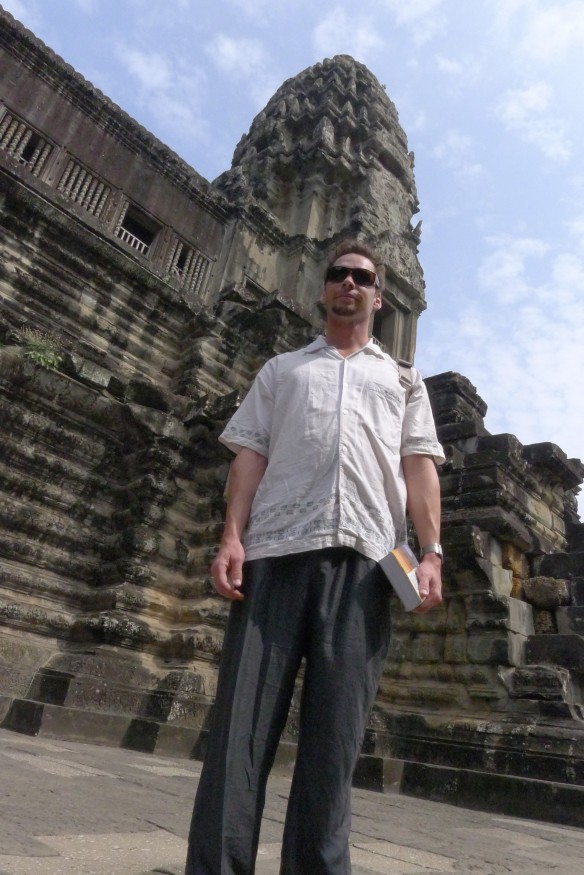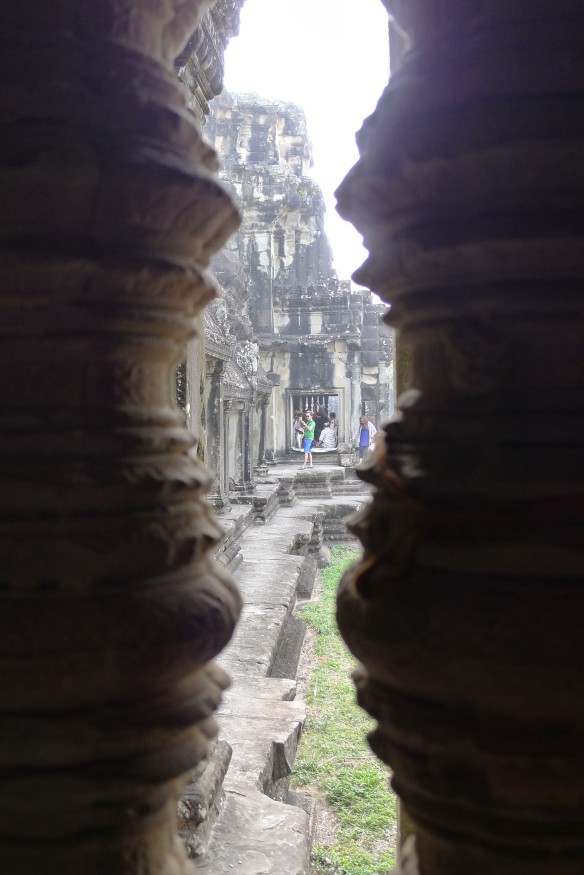We arrived in Luang Prabang late in the evening and were promptly charmed by its little shopfronts and romantic night lights. We stayed in a little guesthouse jammed between the river and a reggae bar that boasted a pool table and an enormous dead beehive hanging over its front door. Since we had flown in from Siem Reap, about 1000 km south, the temperature dropped a few degrees so we started digging through our backpacks for some sleeves (after we remembered what those were). The following morning, we woke up to a typical San Francisco morning *SOUND OF RECORD GETTING SCRATCHED* Wait – what??
Yes, weather in Laos’ second largest city was eerily similar to our own abode. Dense fog enveloped everything in the morning, so we went for breakfast on the Nam Kha river and watched the tendrils of mist unfold over the banks, slowly revealing them to be green and lush. A few coffees later, around noon, the fog burnt off completely and Luang Prabang offered itself for exploration.

Gorgeous view of the Nam Kha with Laos’ mountainous landscape unfolding in the back. It all begged to be explored on foot…
Here’s what we found out: The touristy part of Prabang is mapped along three main streets, one along the river Nam Kha, which is a tributary of the Mekong and meets it in the city’s Northeast – that’s where the expensive spas and boutique hotels are all lined up; one along the Mekong, rife with little restaurants and Khmu massage places; and a middle street where most of the city’s shops offer intricately woven silk scarfs, filigreed silver jewelry and countless artsy objects, everything from horsehair painting brushes to beautiful silk tapestries.
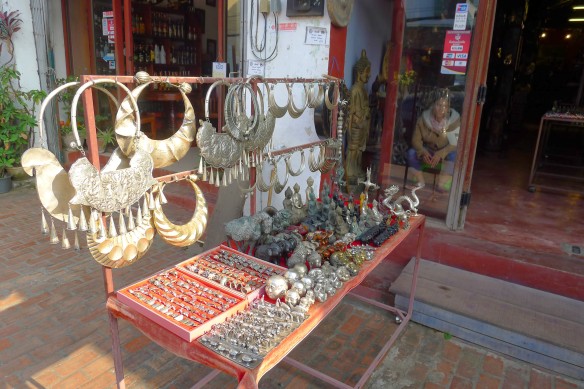
Gorgeous silver jewelry and handicrafts everywhere on display. The Hmong tribe in particular really have a way with metal.
The mulberry tree is a big theme in Laotian art, with heart-shaped leaves twisting and turning in golden brushstrokes on paintings everywhere. The leaf of the mulberry of course is the preferred food of silkworms and its berries are delicious when ripe and stain like no other, which makes them perfect for natural dyes; in Laos, tea made from the bark is also widely consumed – talk about a multipurpose plant!
Prabang is a charming city and spent over five decades as a French “protectorate” (colonization-lite, if you will, sending tin, rubber and coffee to French factories and shops) and French influence certainly shows in its architecture.
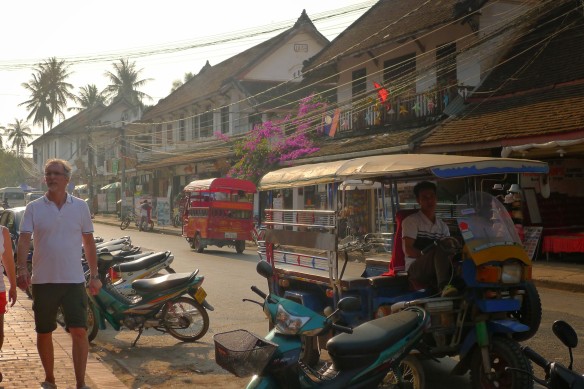
Architecturally Luang Prabang is a little jewel of a town; it’s literally how you would imagine the perfect vacation destination to look in Southeast Asia. But one cannot help but feel that behind this facade of adorable quaintness hides the local’s hard struggle for a better life.
Lovely villas housing restaurants and cafes line the banks of the two rivers, many of them in a sparkling state, and almost all charging exorbitant prices – by our Cambodia-spoiled purses. The tourist population also seemed to skew away from backpacking to flash-packing and even moderately luxurious travel. Fellow travelers we encountered in Prabang were somewhat older (with the exception of a pack of teen Californians with bike-rage) and well-off (aka – not displaying any visible signs of sticker shock).
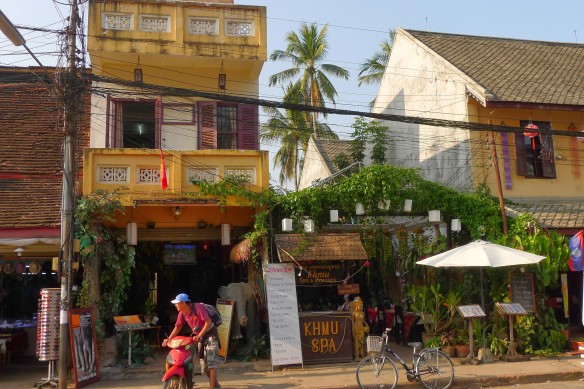
The Khmu is one of Laos’ largest minority ethnic groups. Many of the cheaper spas in Luang Prabang were sporting signs boasting Khmu massages. This is a pretty typical look for Prabang storefronts: lush and exotic, but also inviting.
Laos PDR (People’s Democratic Republic or tongue-in-cheekishly, Laos Please Don’t Rush) is a nominally communist country ruled by a single party according to Marxist principles – you can see the red flag with a sickle and hammer everywhere – although according to local intel Laos is more of a “communitarian” society.

We visited several gorgeous buddhist temples and even found evidence of Buddha’s passage through this realm!!
Sadly a third of this landlocked country’s population lives below the poverty line and in Luang Prabang the income disparities are shocking. It’s easy to stick to the well-lit tourist streets, eat at the posh restaurants with fancy cocktail names and shop for souvenirs at the abundant craft night market; but as soon as you stray from that lovely perimeter, you become aware of how the locals live and it’s a sobering sight.
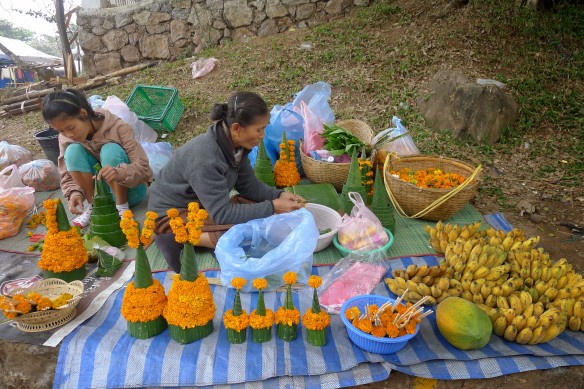
Preparing beautiful offerings out of marigolds and banana leaves for the local temples. Clueless as we are, we bought bananas to eat from these ladies; sorry bananas who were hoping to make it into Buddha’s prodigious belly …
Living on less than US$1.25 per day means that a lot of the locals share a humble hut with extended family and have little, if any, access to healthcare. Even among expats and returning tourists, the fear of illness and lack of doctors and medical facilities is a recurring theme in conversation. As a grim note on a menu explained to patrons “You don’t see old people in Laos because here, when you get sick, you die.” Also, one Namkhong beer ( 22 oz; and approx. $1.50 ) is “roughly a day’s wages for a common laborer, so you’ll almost never see them drink it.” What they do drink is Lao-Lao, rice wine, of which we’ve had the pleasure to partake in the jungle – but more about that later… wink-wink
So, imagine my horror when, after an action-packed afternoon of mountain-biking and hiking to one of the local falls, I felt the first tell-tale signs of food poisoning. Ironically, that very morning, in preparation for the picnic, Ed and I chose two different sandwich stands: him, a local cart with sandwich ingredients we couldn’t even begin to guess; me, a fancy stand close to the market that slapped together a pretty-looking chicken-avocado sandwich. The difference between the two sandwiches: mine was four times the price and came with a free extra night of cold sweats and atrocious cramps. But, hey, every true traveler has to go through it at some point in time, and lesson learnt: go for the locals’ food stand!

